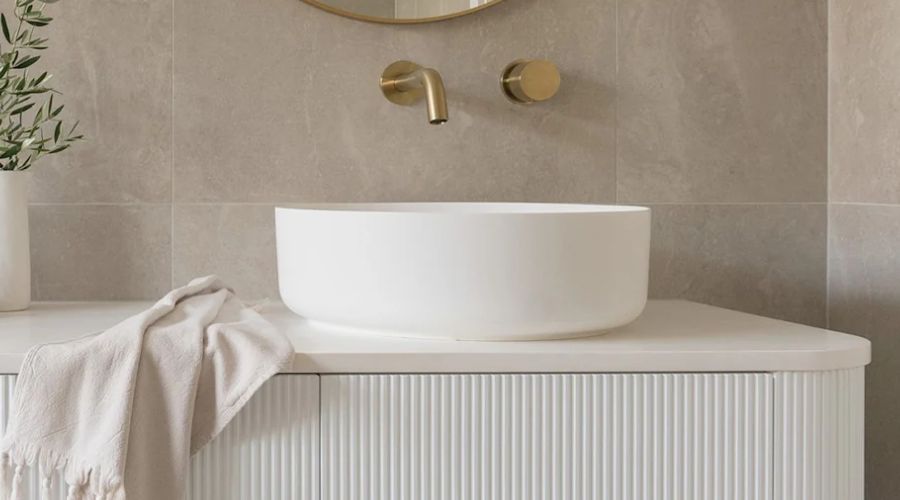How to Install Bathroom Cabinets (and When to Call in a Professional)

Installing new bathroom cabinets can be a fantastic DIY project if you’re looking to refresh your space. With the right tools, you can get the job done and enjoy the satisfaction of a completed project. However, not every bathroom cabinet installation is straightforward. Sometimes it’s best to bring in a professional to ensure a smooth, secure fit. Here’s a step-by-step guide to help you install bathroom cabinets and tips on when it’s wise to call in the pros.
Tools You’ll Need to Install A Bathroom Cabinet
Before you get started, here’s a list of tools you’ll want on hand:
- Level
- Drill and screwdriver
- Measuring tape
- Stud finder
- Pencil or marker
- Wall anchors (if needed)
- Shims (for levelling)
- Caulk (for finishing touches)
Step 1: Measure and Mark
Start by measuring the space where your cabinet will go. Mark the height and position on the wall to ensure it’s aligned properly.
- For a wall-mounted cabinet, 900mm from the floor is a good standard height, but adjust it to suit your needs.
- Use a level to mark a straight line to keep your installation accurate.
If you’re working with a shaving cabinet or wall-mounted vanity from Buildmat, check the manufacturer’s guidelines for specific measurements and placement tips.
Step 2: Find the Studs
Using a stud finder, locate the wall studs where you’ll be mounting the cabinet and mark these spots. Attaching the cabinet to studs gives it extra support and helps prevent it from loosening over time.
- Securing the cabinet into studs ensures it can handle the weight without shifting or coming loose. Heavier cabinets especially need that extra support.
If there aren’t any studs in the right places, you’ll need to use strong wall anchors that can handle the cabinet’s weight.
Step 3: Pre-Drill Holes
Once you know where the cabinet will attach, pre-drill holes in the cabinet frame to make installation smoother. This helps prevent the wood from splitting and makes it easier to drive in screws.
- If you’re installing a freestanding cabinet, you can skip this step and move on to positioning the cabinet in Step 4.
Step 4: Position the Cabinet and Level It
Carefully lift the cabinet into place, aligning it with the marks you made earlier. Use a level to double-check that it’s perfectly straight.
- If the wall or floor is a little uneven, use shims to level the cabinet. This will help prevent issues like doors or drawers sticking.
Step 5: Secure the Cabinet
With the cabinet level and positioned, drill screws through the cabinet frame and into the wall studs or anchors. This step secures the cabinet to the wall, so make sure it’s stable and firmly attached. Give the cabinet a gentle shake to ensure it’s firmly in place.
For larger installations, like a custom or heavy vanity from Buildmat, you might want a second person to help hold the cabinet steady while you secure it.
Step 6: Finishing Touches
Once the cabinet is secured, attach any handles, shelves, or additional features. To keep moisture out, apply a small line of caulk where the cabinet meets the wall or floor. Adding caulk not only gives a clean finish but also protects the cabinet and wall from water damage over time.
When It’s Best to Call a Professional Bathroom Cabinet Installer
While installing bathroom cabinets can be a satisfying DIY, there are times when bringing in a professional makes sense. Here’s when it might be worth letting an expert take over:
1. Plumbing or Electrical Work
If your cabinet or vanity requires plumbing adjustments or wiring (especially for lighting), it’s best to call a licensed plumber or electrician. Proper installation can prevent costly issues down the line.
2. Wall-mounted or Heavy Cabinets
Wall-mounted or heavier cabinets need precise installation to ensure they’re safe and stable. Professionals have the experience and tools to secure the cabinet properly, so you won’t have to worry about it coming loose.
3. Uneven Walls or Floors
If your walls or floors are noticeably uneven, it can be tricky to get the cabinet level. A professional can make the necessary adjustments for a seamless look and secure fit.
4. Custom or High-End Cabinets
When you’ve invested in custom or high-end cabinets, it’s worth ensuring they’re installed perfectly. A professional installer will handle them with care and make sure the job’s done right.

Installing high-end floating cabinets (like this 1200mm wall-hung Waverly cabinet) is best left to professionals.
5. Limited Time or DIY Experience
If you’re short on time or not confident in your DIY skills, hiring a professional can save you stress and ensure the final result looks polished.
Upgrade Your Bathroom with a Premium Vanity or Shaving Cabinet
Explore Buildmat’s range of bathroom vanities and shaving cabinets for stylish, functional options that suit any bathroom.





















































































































































































































